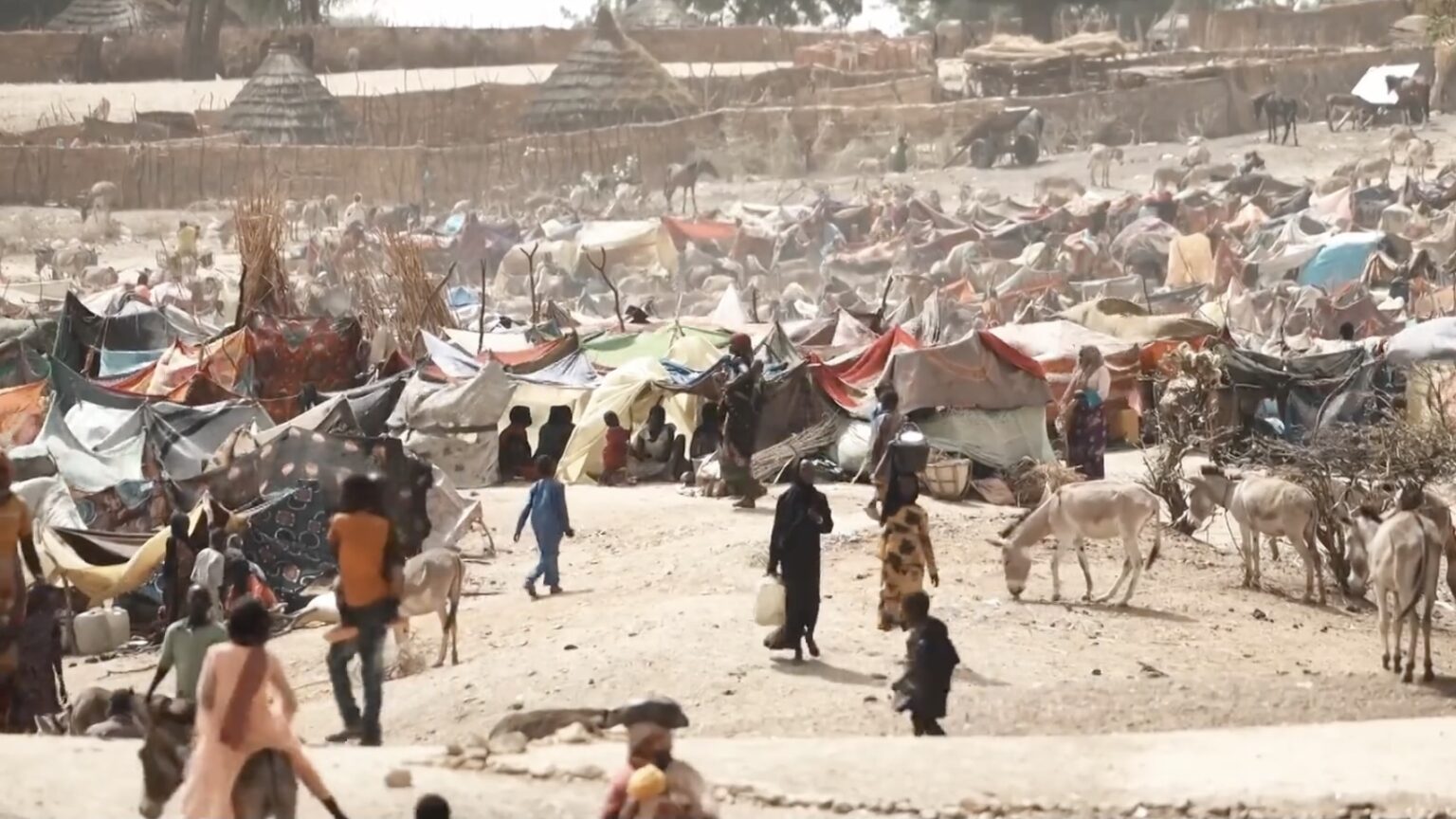Netanyahu receives standing ovation in US Congress while anti-genocide protesters brutalized at Capitol gates
Original article by Natalia Marques republished from peoples dispatch under a Creative Commons Attribution-ShareAlike 4.0 (CC BY-SA) license.

A wanted war criminal addressing US Congress proved to be a pitched battle between the state and tens of thousands of anti-genocide protesters
Tens of thousands of people demonstrated in Washington, DC yesterday in opposition to Benjamin Netanyahu’s joint address to Congress. While war criminal Netanyahu received a standing ovation from both chambers of Congress and both major establishment parties, thousands took to the streets directly outside the US Capitol building to register their disgust with the US’s support for and complicity in the genocide of 186,000 Palestinians.

Police forces launched pepper spray at demonstrators and made several arrests, but demonstrators, who came as individuals or part of organizations of the working class such as student groups, labor unions, and tenant organizations, overcame intense police repression in order to assert their right to protest. In doing so, these protesters registered the mass discontent among the people of the United States regarding the US’s bankrolling of Israeli genocide. Recently polling has shown that as many as 61% of people in the US are against sending aid to Israel. Among people under 30, that number jumps to 77%.
The state made drastic preparations to protect Netanyahu’s speech to Congress from demonstrations. Over 200 New York Police Department officers were deployed ahead of protests. The layers of barricades and protections around the Capitol building far exceeded those on January 6, 2021 when far-right demonstrators were able to go as far as scaling the building and entering the offices of the highest-ranking politicians. “Look around the area, there are snow plows, police barricades, eight-foot high fencing,” said Brian Becker, Executive Director of the ANSWER Coalition, one of the key organizers of the demonstration, during the rally preceding the march through Washington. “This US Capitol, which says to itself, we are the people’s house, it should be renamed, it should be called Fort Netanyahu.”
Mass march experiences heavy repression

Following the rally of tens of thousands which convened in front of the Capitol, demonstrators prepared to march. Shortly after the march began, protesters were blocked by a line of police officers from multiple agencies, including DC police, Capitol police, and NYPD. After it became clear that the police intended to stop the march in its tracks, Becker addressed the crowd from the frontline, “The police have decided to block the people of the United States from exercising their constitutional right to go to the point of the protest. We say no. We have the right to go on Constitution Avenue, there’s no rule against it. The permit is called the First Amendment of the Constitution.”

With that, the crowd decided to press forward, after which, police deployed pepper spray liberally amongst the crowd, injuring several protesters.
“This proves to us that our police forces are training with the IDF, they’re learning tactics from the IDF,” Ibtihal Malley, an organizer with the Palestinian Youth Movement, told Peoples Dispatch directly after police pepper sprayed the crowd. “They are afraid of the people, and they’re afraid of the mass movement for Palestine, so they resort to violence to brutalize our people, just as they brutalize us in Gaza.”
“We are here in DC marching with tens of thousands of people that are asserting their right to march and to protest, and we were blockaded by tens of police,” said Lameess M., also a lead organizer in the Palestinian Youth Movement, in an interview with Peoples Dispatch following police repression. “[Police are] here to protect a war criminal and use our tax dollars to protect that war criminal, while pepper spraying the people that they claim to represent.”
The incident of state repression only made the crowd more defiant. The march quickly diverted to another street, where they continued to evade police lines for several blocks throughout Washington, DC, before rallying once again in front of Union Station. Inspired demonstrators took it upon themselves to take down three massive US flags in front of the station, replacing them with Palestinian flags, and burning the US flags along with a puppet effigy of Netanyahu.
This expression of popular anger at genocide has been seized upon by mainstream media as well as the highest-ranking politicians in the country to denounce the protests. Vice President Kamala Harris, the Democratic Party favorite for the 2024 presidential elections, released a statement making no mention of the reason that tens of thousands had gathered in Washington, DC to protest the celebration of a war criminal. Instead, she condemned “the burning of the American flag.”
“That flag is a symbol of our highest ideals as a nation and represents the promise of America. It should never be desecrated in that way,” Harris stated. “I condemn any individuals associating with the brutal terrorist organization Hamas, which has vowed to annihilate the State of Israel and kill Jews. Pro-Hamas graffiti and rhetoric is abhorrent and we must not tolerate it in our nation.”
The ANSWER Coalition released a statement following the demonstrations. “To try and misdirect people’s attention, some parts of the corporate media and the White House itself are now trying to minimize the significance of these actions,” the anti-war organization stated. “They are attempting to demonize the protests, and focus on one individual sign or some individual’s burning of the American flag. This is designed to distract the public from the actual police violence yesterday, and the true mass violence that has claimed over 40,000 Palestinian lives and millions more in U.S.-led wars across the world. But the rising of the Palestinian flag on multiple flagpoles in front of Union Station and in the shadow of the US Capitol grounds is a clear indication that the tide has turned. Public opinion has been transformed so dramatically that no attempt at deflection can turn it back.”
Organizations of the working class denounce genocide
Despite heavy repression, organizations of the working class used the platform of the demonstration to denounce the US’s unconditional support for Israel. The day before the demonstration, seven major unions, representing almost half of all unionized workers in the United States, penned an open letter calling for an end to all US military aid to Israel and a ceasefire in Gaza. Leaders from some of these major unions addressed demonstrators in front of the Capitol.
These leaders include Mark Dimondstein, President of the American Postal Workers Union. “In the spirit of working class solidarity and justice, the American Postal Workers Union… stands with humanity and the suffering people, workers and unions in Gaza, in calling for a long overdue ceasefire and massive humanitarian aid to the 2.3 million people of Gaza,” he addressed the rallying crowd. “While they are displaced, homeless, bombed, killed, injured, diseased, and starving behind the war crimes of the Netanyahu-Israeli government, fully backed by US military aid.”

Dimondstein’s denunciation of US government policy is not only reflective of his personal opinion, but that of the workers the APWU represents. “Just last week in our convention we voted,” calling on the US government to halt military aid to the US government, “and to stop using our tax dollars for more war,” he said.
“It’s a labor issue. We believe in social justice, we believe in international solidarity,” Dimondstein told Peoples Dispatch in an interview. “Workers pay taxes, and the last thing our taxes should be used for is to kill, maim, and starve innocent men, women, and children of another country.”
“The workers are deeply affected in Palestine and the unions are deeply affected in Palestine,” he continued. “And it’s also a working class issue because there’s real danger of a wider war. And who has to fight, kill, and be killed in these unjust wars if it’s not the working class?”
“US taxpayers are basically funding a genocide,” said Arrion Brown, the director of the Support Services Division within the APWU, in an interview with Peoples Dispatch. Brown has been a postal worker for 24 years. “Those same tax dollars would do so much better in the US, helping actual working people.”
“Working people hold the power of the country, of the world. So it’s important for working class people to express our thoughts, to let the powers that be, the establishment know that they’re not going in the direction we want. Ultimately, we are the political power, we are the working power, and we are the power of the world.”
Brandon Mancilla, a leader in the international board of the United Auto Workers, also addressed the crowd on behalf of the over 400,000 workers of diverse sectors represented by the UAW. In his speech, Mancilla credited rank and file workers with pushing the leadership to call for a ceasefire in Gaza, a step the union took back in December. “Autoworkers in Dearborn, Michigan, have been personally affected by this issue, and have demanded that their union and their government stop funding a genocide. Because academic workers all across the country in countless campuses in almost every state of this country have been protesting for their literal right of free speech, to call on their universities to divest and be held accountable,” he mentioned. The UAW notably represents not only auto workers but a large portion of organized academic workers across the country. Following the brutal crackdown against the Gaza solidarity encampment at the University of California – Los Angeles (UCLA), UAW Local 4811, which represents academic workers within the University of California system, went on strike for the right to protest for Palestine, representing the first strike in US history in relation to the Palestine solidarity movement.
For Mancilla, the letter that seven unions signed onto on July 23 represents an “escalation.”
“A ceasefire has not been realized, it has not been actualized, and in order to actually make that happen, not only do we have to keep negotiations going, and agree to the framework, we have to also materially intervene, which means ending arms shipments to Israel,” Mancilla told Peoples Dispatch.

Unions were not the only organizations of the working class out in full force that day—Peoples Dispatch also spoke to tenants organized with CAAAV (Committee Against Anti-Asian Violence), an organization that united Asian-American communities in New York City against gentrification, among other issues. Bingjie, a young member of CAAAV from the NYC neighborhood of Chinatown, told Peoples Dispatch that it’s unjust that tax dollars are being used to fund genocide “when tenants don’t even have enough in New York.”
“The fight for Palestine is not just a fight for Palestine itself, but for liberation for the whole entire world,” she said.
Original article by Natalia Marques republished from peoples dispatch under a Creative Commons Attribution-ShareAlike 4.0 (CC BY-SA) license.



